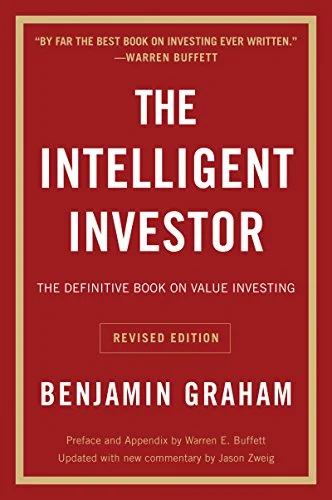“The Intelligent Investor” by Benjamin Graham is a classic book on value investing. It is divided into 15 chapters, each covering various aspects of investing.

If you are looking for an extended summary, get this book:
Here’s a brief summary of each chapter:
Chapter 1: Investment versus Speculation
In this chapter, Graham distinguishes between investing and speculation. He argues that investing involves analyzing a company’s fundamentals and its long-term potential, while speculation involves profiting from short-term price movements.
Chapter 2: The Investor and Inflation
Graham discusses the impact of inflation on investments and recommends that investors take inflation into account when making investment decisions. He also suggests investing in stocks that can earn higher returns than the rate of inflation.
Chapter 3: A Century of Stock-Market History: The Level of Stock Prices in Early 1972
Graham provides a historical overview of the stock market and analyzes the level of stock prices in early 1972. He advises caution when investing in stocks that are trading at high valuations.
Chapter 4: General Portfolio Policy: The Defensive Investor
Graham introduces the concept of the defensive investor and suggests constructing a portfolio of stocks and bonds that can withstand market volatility. He also provides guidelines for building a defensive portfolio.
Chapter 5: The Defensive Investor and Common Stocks
Graham discusses the role of common stocks in a defensive portfolio and recommends focusing on stocks that are undervalued and have a strong financial position.
Chapter 6: Portfolio Policy for the Enterprising Investor: Negative Approach
In this chapter, Graham outlines the portfolio policy for the enterprising investor and suggests focusing on undervalued stocks with a potential for growth.
Chapter 7: Portfolio Policy for the Enterprising Investor: The Positive Side
Graham continues to discuss the portfolio policy for the enterprising investor, recommending investing in undervalued stocks with a long-term potential for growth.
Chapter 8: The Investor and Market Fluctuations
Graham provides advice on how investors should respond to market fluctuations, emphasizing focusing on the underlying fundamentals of the companies in their portfolio.
Chapter 9: Investing in Investment Funds
In this chapter, Graham discusses the pros and cons of investing in investment funds, such as mutual funds and closed-end funds.
Chapter 10: The Investor and His Advisers
Graham provides advice on how investors should choose and work with financial advisers, such as brokers and investment managers.
Chapter 11: Security Analysis: Principles and Technique
Graham introduces the concept of security analysis and provides guidelines for analyzing the financial statements of companies.
Chapter 12: The Defensive Investor and Common Stocks
Graham revisits the role of common stocks in a defensive portfolio, emphasizing focusing on undervalued stocks with a strong financial position.
Chapter 13: Selecting Bonds and Stocks to Buy
Graham provides advice on how investors should select bonds and stocks to buy, including analyzing financial statements and determining a company’s intrinsic value.
Chapter 14: The Market and Investors’ Psychology
Graham discusses the impact of investors’ psychology on the stock market and recommends investors be aware of their own biases and emotions when making investment decisions.
Chapter 15: The Final Judgment
In the final chapter, Graham emphasizes the importance of a rational and disciplined approach to investing, emphasizing long-term results over short-term gains. He summarizes the main principles of value investing.

















Leave a Reply